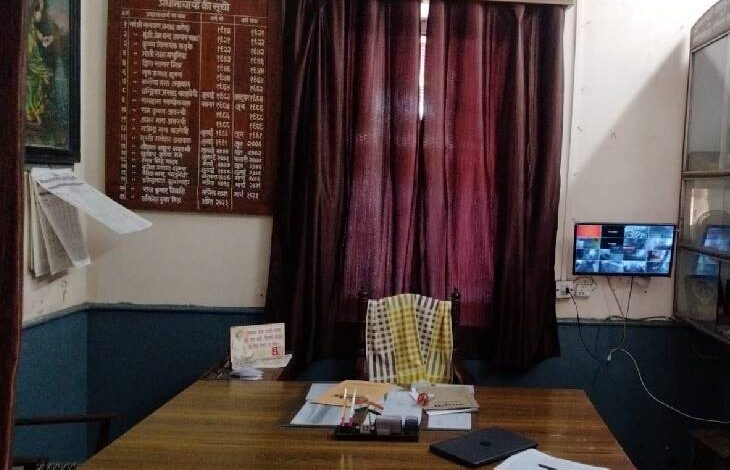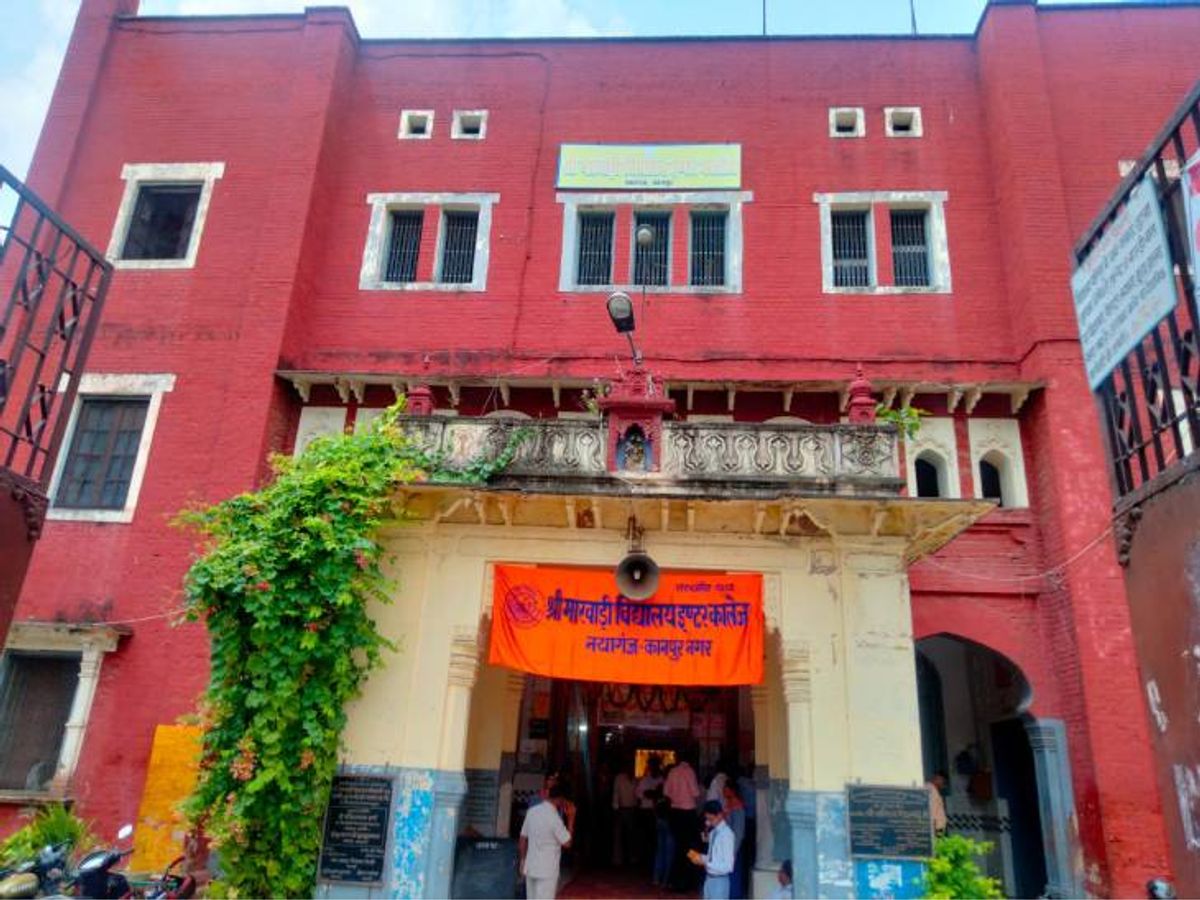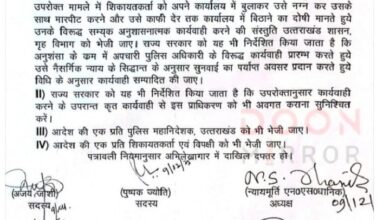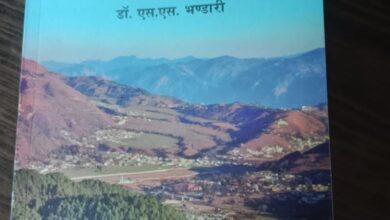Kanpur and its hidden stories: A lesser-known human history

Kanpur and its hidden stories: A lesser-known human history
By Ammar Yasir Naqvi
If a scientist is to seek out a natural pattern and occurrence in a seemingly chaotic human history, he might stumble upon an accident of history that happens so often, that it seizes to be called so. It is hardly an irony that the epicenter of the most brutal regimes priding themselves of order and iron fist is the progenitor of its undoing, the most trenchant, vociferous and dynamic challenge to the power and its notion. Be it Bastille and French Revolution, St. Petersburg and Russian Revolution or Kanpur and the Revolt of 1857.
Kanpur, geographically located on the Grand Trunk Road on the shores of the Ganges was a connecting artery between Punjab and Bengal. It was established as a military outpost, a garrison town, as a showcase of the Company’s prowess of dominance, to safeguard its trading interests and if we put it euphemistically, to protect the enfeebled Nawab of Awadh. It witnessed one of the bloodiest episodes and the longest siege in 1857. The attack of Indian sepoys on Wheeler’s entrenchment, the Bebigarh Massacre, and the Sattichaura Ghat Massacre by forces of Nana Sahib were major events. The English retaliated with vengeance and retribution and raised a gory war cry ‘Remember Cawnpore’, to massacre, justify and celebrate the ruthlessness at home (England).
The subjugation was crimson, absolute and complete. The stories, now kitchen tales still reverberate in street corners and old quarters. What followed was a lull in the courage of the native populace and a bitter realization that White masters were here to stay and with their ways. The English dug their heels, destroyed native settlements and changed the city's geography, creating boulevards, civil lines, gardens and a clear line of defence and segregation between the dingy native towns, as they called it and clean European quarters. Social Darwinism dictated state policy, segregation was legally bound and enforceable. The spectre of revolt hung heavy and cautious of avoiding its repeat, the mingling of ideas, people or physical space was discouraged and frowned upon.
It is in this context that we try to build a narrative, of the second genesis of the Freedom movement, a sort of Renaissance in a completely changed world, initially on shaky grounds but finding its footing, much varied, diversified and distinctly local and yet connected to the national movement. How it became the melting pot of ideas and a centre of a robust national movement, the nerve centre of thriving underground revolutionaries which transformed into a vibrant trade union movement is a story unto itself. By no means homogeneous, these contours were contradictory, competing and even contesting and yet reconciliatory for their goal of freedom.
The city was as much conditioned by the national movement, as it shaped it, responding independently. Revealing, how enmeshed and dependent local and national movements are. This distinction of being a prime mover and shaker of history and not just a participant is no mean achievement. As we move away from the big picture, we see elfin players who acted and often directed their destinies and that of the freedom movement.
At the crossroads of ideologies, we observe a perceptible contour at a micro level, how they played out through institutions, people, ideas and responses. These encapsulate the moving spirit, the individual sacrifice, and a human element, in short, contextualizing anecdotes from a historical perspective.
It doesn’t claim to be a compendium of lost souls and one-line description, but a little broader and deeper in its scope which focuses not on an individual, but an array of known luminaries and their hidden stories and rescue unknown figures, places that are among us, waiting to be rediscovered for their contribution. Through these variegated micro-narratives, their sketch; attempts to weave a parallel subaltern narrative of the movement and the legacies they left behind. This, in a way, is the history of the freedom movement through the eyes of a city and its people.
By no means comprehensive, it doesn’t claim to be judicious. At the heart of this exercise is a very personal attempt of a generation of millennial, which tries to appreciate and understands the value of hard-won freedom. Trying to find one’s footprint and stakes in the stories, sacrifice, spirit, courage and valour of this land, its people and the cheerful cry in every Indian mind on 15 th August 1947, as Martin Luther King years later puts it in a far of land, “Free at last, Free at last, Free at Last”.
Early nationalist Movement
A society in crisis often introspects, and churns itself from within, attempting to rejuvenate in the secular and religious universe. The earliest attempt was establishing the branch of the Indian Association of Surendra Nath Banerjee, in 1877 when he delivered a rousing speech in the ‘Station Theatre’ (later Head Post Office). Arya Samaj was founded in 1879 by Pratap Narayan Mishr and Congress in 1888 by Prithvi Nath Chak. As the legends have it, he had a head-on collision by challenging Governor of U.P Sir Auckland, who had threatened to arrest any participant in the National Congress Convention. Chak demanded in a public rally to touch him if anyone dared to do so.No one did. Not even the District Magistrate.
The second Resurgence
A Pole Star sort of personality in the early nationalist constellation was Narayan Prasad Arora. Attending the Benaras Session of 1905, in an English Fashion of clubs and conferences, he was deeply moved by the speech of Lala Lajpat Rai and returned wearing a Dhoti-Kurta. A Swadeshi before Gandhian… He was like a ‘Paladin in khadi’. Though, congressman and briefly Swarajist, the Underground Ghadar movement, newspaper editors, socialists, revolutionary and labour unions all vouched for his support. Kanpur, by now an industrial town, had the dominant streak of extremists after the ‘Surat Split’ of 1907.
By 1919 Rowlatt Satyagraha took root in the city and with it came the first major challenge, to the empire after 1857, the ‘Non-Cooperation Movement’. It was like bringing different strands of assertive resistance and pent-up anger together; widely spread, with an equally wide spectrum of participants, equipped with nonviolence, it had hit at the very root of the empire. Behind it lay the decades of social work of homegrown revivalist and reformatory organizations, both tight-knit localized and loose-knit national and numerous academic works that lay bare the empire and its exploitative drain-oriented economic machinery. Last but not least deeply rooted yet well-coordinated local leadership. For example, it was Gangadhar Ganesh Jog who established a Congress volunteer corps, called ‘Congress Sewa Dal’ to assist the movement.
It was Maulana Hasrat Mohani who typified the coalescence of identities at odds. He was a Maulana, a ‘Swadeshi’ and a communist, all in one. An interesting anecdote is that he always had a single Sherwani ready for any occasion, and all it took was immediate notice, a Tanga and his Sherwani to set out for a mission.
By the early 1930s, the ‘Civil Disobedience Movement’ started with Gandhi’s breaking of Salt at Dandi. In Kanpur Pyare Lal Agarwal, and G G Jog made salt at Shrddhanand Park. Though the movement was a resounding success, a parallel movement of the Underground Revolution was being crushed. When on 23 rd March 1931, Bhagat Singh and his Comrades were hanged; Congress reached its lowest ebb. To quell the anger, the English cons pirated the infamous 1931 Riots. Ganesh Shankar Vidyarthi lost his life in ‘Choubegola’ to the rioters. It was in the City Hospital that on the 27 th of March, his corpse was identified out of his attire and name on his ankle by his son Harishankar Vidyarthi and Dr Jawahar Lal Rohatgi.
Conspiracies and Cases
Resistance to British rule worked on two extremes. Reformers and early nationalists implored for the amelioration of laws and an increase in the participation of natives in governing themselves through petitions, appeals and legislature, turning the law of the land in its favour, and highlighting the hypocrisy of high ideals of, democracy, freedom, fraternity and equity of the Raj.
The other was revolutionary terrorism of the European kind. Inspired by philosophers like Max Stirner and the Russian anarchism of Mikhail Bakunin, among many others, they set up a network of underground revolutionary camps to spread disaffection through propaganda literature and newspapers.
They instigated terror in the English populace through targeted assassinations of unruly and unpopular officials, sabotage of government buildings and organized dacoity, aimed to disrupt and paralyze the functioning of the empire. The literature of grassroots and newspapers played an important role in spreading the message and intent of the movement and in later years enlightening the masses.
It is in this context that by 1908 Bande Matram newspaper of Bipin Chandra Pal started arriving through Narayan Prasad Arora and in the same year Lala Hardayal founded the first revolutionary group of Kanpur. With the formation of the Gadar party in New York in 1911, Krtar Singh Sarba’s effort to promote enmity and mutiny in the army made Kanpur the epicentre of revolutionary activity and British counter-revolutionary operations, with repeated raids in office and residences of sympathizers and active collaborators like Vidyarthi and Arora and Advocate Shambhu Nath Tandon respectively.
1908 was also the year of the execution of Khudi Ram Bose and Prafulla Chaki in the Muzzafarpur Conspiracy case. This inspired Manni Lal Awasthi to form a revolutionary group behind Christ Church College and though caught and about to be hanged, was saved on the gallows, nothing less by divine providence.
The October Revolution of 1717 lay bare that imperialism was the highest stage of Capitalism. It provided a realistic goal of freedom from the yoke of near-slavery and inspired, channelized and gave directions to anti-imperialist movements among colonial subjects. By the 1920s the revolutionary movement was taking root in industrial towns, and to kill it in the bud, in 1924 the British government, implicated eight prominent revolutionaries for conspiracy against the Emperor, what became the Bolshevik/Kanpur Conspiracy Case. However, it proceeded only with Muzaffar Ahmed, Nalini Gupta, S A Dange and Ram Charan Lal Sharma.
One of the earliest revolutionaries was Radhey Mohan Gokul, who adorned himself in ascetic attire; he hailed from Rajasthan and had an erstwhile connection with Anushilan Samiti. He was initiated into Marxist literature in the company of Sachindra Nath Sanyal by Narayan Prasad Arora. Gokul’s prodigy was now forgotten communist leader Satyabhakt, who owed his fame to the organization of the first communist conference and a very public difference to the extent of a spat with M N Roy, over nomenclature, functioning, finances and allegiance of keeping the movement localized or part of international.
Satyabhakt gave an advertisement on 1st September 1924 in newspapers of the formation of the Communist Party. In 1925, the Kanpur Congress session and the first Communist party session coincidently happened across the road a few meters apart. It is at this conference that Gokul and Satyabhakt and more so later exemplified a blend of contradictory practices. Charu Gupta called it Vernacular Communism. This was an intermeshed of caste, gender, Hindi language and local moralities with a rooted and localized political practice of international movement. The 1925 conference is replete with high drama and numerous stories of early confrontation and power play within the party and cohabiting and sharing space in the nationalist movement. Sachindra Nath Sanyal chose Kanpur for the conception, formation and first meeting of the Hindustan Republican Association. Its constitution was published on a yellow paper, later popularized among revolutionaries as ‘Yellow Paper’.
Perhaps the most fortunate encounters were the meeting of Bhagat Singh and Ganesh Shankar Vidyarthi, and the invitation of Chandra Sekhar Azad from Jhansi by Radhamohan through Surendra Pandey. Kanpur became the organization point of Saunder’s assassination, the Assembly Bomb case and a failed bomb attempt on Lord Irwin’s train.
The tales of the underground movement are filled with passion, agony and martyrdom of revolutionaries. Driven in pursuit of freedom and hoping for the deliverance of this land they played a cat-and-mouse game with intelligence which used intrigues, trickery and cheating to kill the movement and hunt down the revolutionaries. The city is peppered with such stories and places cramped in alleys, some lost and some on the brink of it.
Sweat and Blood
Industrial capital and imperialism reinforce each other and by order of their existence create an inherent hierarchy within the capitalist class and between capitalist and labour. In a colonial economy, the benefits of manufacturing through, customs, monopoly and balance of trade are heavily tilted to benefit the colonialist capitalist class and leave just enough breathing space for native industries to survive in stiff competition. This logically creates a class of disenfranchised, thoroughly exploited workers, willfully squeezed by colonial industries and to some degree, under institutional compulsion by Indian industries. They gave pitiful and paltry wages as a favour not what rightfully belongs to them.
Kanpur, by the beginning of the 20 th century, was at the heartland of the empire and trade route along the river bank of the Ganga and started getting traction as an industrial hub. To meet the growing needs of British Indian Soldiers, Elgin and Muir Mills were set up. Dominated by textile industries initially British and later Indian like Swadeshi and J K. The first union, Kanpur Labour Union was established in 1914 by Employees of Elgin mill i. e. Pandit Kamdatt who worked in the air house and with the help of Lala Devi Dayal started organizing other mill workers.
The city’s first organized and successful strike was in Lal Imli with the demand for an increase in wages on 4 th November 1916, which snowballed with the help of ‘Kanpur Mazdoor Sangh’, into the general strike with the participation of 15,000 workers armed with 11-point demand, with the active support of Dr Murlilal Rohtgi, Dr Abdul Karim, Vahidyar Khan and Ganesh Shankar Vidyarthi. It took U.P Governor Sir Harcourt Butler to defuse the impasse, and most demands were met like 10 hours’ work shift and a 10% increase in wages.
In the interim period, a Red Congress came into being that by 1935 merged with the communist party, which was banned on 23 rd July 1934 as its influence among trade and labour unions grew. It went underground. In 1936, Sant Singh Yusuf with Harni Nath Shastri led a general strike in Earthton West Mill. Between 1936 and 1941 the influence of Communists grew so huge, that Kanpur came to be known as ‘Red Kanpur’ and the labour constituted a ‘Red Army’ to fight off the thugs of the mill owners with 10,000 members and thousand women members. The year 1938 saw the city’s biggest strike till then, with the participation of 42,000 estimated workers across 16 mills for 52 days and the formation of a central strike committee.
An interesting incident happened in 1940. As the influence of the Russian Revolution spread and communists gained ground, the red colour became the symbol of labour and workers, and a source of resistance against exploitation. When Elgin Mill worker Elahi Baksh went wearing a red shirt to the mill, he was badly beaten and kicked out of the job. In solidarity, nearly 20,000 workers coloured their shirts in red and went wearing them the very next day. Mill owner union president Arnold did try to create a reactionary force, called ‘Black Shirts’ but Anantram, who headed it, burned all the Black Shirts of workers and joined the red army of workers.
Organizations and movements
Every revivalist, reformatory, nationalist or revolutionary movement organized itself in institutions and sustained through constructive work and the literature they produced which leave behind a legacy for posterity. These organizations are not an a-historical spin-off, but a result of their time and ideologies, their response to the challenges are varied but build on a sort of social substructure prevalent.
Thus, Pratap Narayn Mishr of Arya Samaj saw Raj as a consequence of Hindu society’s carapace that shielded itself to reinvent itself. He tried to revive and sieve it of reactionary and regressive practices. Narayan Prasad Arora established the Hindu Club through which he disseminated aggressive nationalist content. Hasrat Mohani in 1923 gave the slogan, ‘Inqilab Zindabad’ which became the war cry of every people’s movement.
With the death of Khudi Ram Bose in 1908, the young Muslim students of Kanpur formed the ‘Young Turk’ organization and sent Mujtaba Husain to Burma to fight alongside Gadar’s leadership. In 1929 Ganesh Shankar Vidyarthi founded the ‘Youth League’ which took an active part in Flag Stayagrah in Phoolbagh, in response to British attempts to break off nationalist flag hoisting.
Satyabhakt knew the growing demand for socialist literature and opened a ‘Socialist Book Shop’ in his house in the Patkapur area, later Narayan Mishr opened ‘Prakash Pustakalay’ and Jagdish Narayan Shukl set up an underground network to supply revolutionary books and also wrote a pamphlet named, ‘Bam ka Darshan’. Batukeshwar Dutt established Gymnastics Club, behind the facade of the gymnasium; it was used to spread banned literature. In the Patkapur area, Arjun Arora after his release founded ‘Hindu Bal Sabha’, later renamed ‘Bal Sabha’. This is still actively working among children.
The other half
Women in the freedom movement were looked at and represented through the lenses of the Gandhian mass movement either as partial participants or appendages to the dominant male counterpart. They gave their sweat and blood in equal measures yet their diverse and independent role in active politics was hardly recognized. The most prominent name was Laxmi Sehgal, though her line of action as they say in the Army was distant, she spent a large part of her life serving here. Apart from her women were equal comrades from the beginning.
Hasrat Mohani along with Swami Kumaranad were the first to demand complete Independence in 19212 at the Ahmedabad Session of Indian National Congress. During the non-cooperation Movement, it was his wife Nishat ul Nisan, who opened the first Swedishi store at Gilis Bazar. Congress Sewa Dal, founded by G G Jog had a dedicated women’s wing with 1,200 hundred members under the leadership of Swaroopwati Rohtgi.
Krishna Arora had many accolades to her name. When Gandhi stressed after the Non-cooperation movement on constructive work among the ‘Harijans’, she headed the Birhana Harijan School (now located on Birhana road), and successfully involved women of Patkapur area to teach. When CID visited her home, she often pretended to sleep or sat on the trunk for puja hiding banned literature.
Chandrasekhar Azad had many well-wishers, he spent the night with, and two of them were Ram Chandra Musaddi and Mannillal Trivedi. Their wives did all-night vigil with guns to guard Azad. Nadira and her companion did a dacoity of one lakh thirty-six thousand for the revolutionaries from the head post office.
With the underground movement taking root, the home of Tara Agarwal became the nodal point for the collection and distribution of banned literature. As the legends have it with CID surveillance upped, Kastoori Devi started supplying the literature hidden beneath Tanga and an old woman selling pan kept them informed of the CID’s movement.

Newspapers and Magazines
A movement will remain directionless, devoid of its core meaning, if it fails to spread the ideals it is fighting for among the masses. Contrary to the 1857 revolt where news spread through conventional mediums, with rumours through word of mouth with a much slower speed, the printing press, telegraph and spread of newspaper in vernacular not just spread the news fast, it made local news into a national one, and through a shared sense of misery and suffering created a national conscience and national audience.
Thus, an industrial strike of Kanpur workers strikes a chord with jute workers of Dhaka who read the news in Bengali, having no physical connection that bound them together emotionally. And with this came solidarity. Understanding the implication of this medium, the British brought in a series of Press Acts to censure, stifle and close these newspapers. Yet they kept circulating widely, often with camouflaged news and as underground news bites.
Though the very first newspapers were ‘Hindu Prakash’ and ‘Shubhchintak’ they ran briefly. It was in real sense Narayan Mishra’s ‘Brahman’ which was the Arya Samaj mouthpiece and focused on Hindu resurgence. The other major newspaper was ‘Saraswati’ started by Mahavir Prasad Diwedi in the Juhi area. In 1920 during the non-cooperation movement, Ramshankar Awasthi started ‘Vartaman’. And by 1923, Narayan Prasad Arora started ‘Vikram’ which was the mouthpiece of the Swaraj Party. In 1924, the government seized what it called the seditious pamphlet ‘Bhartiya Smyavadi Dal’ 1924 written by Satyabhakt. Vidyarthi’s ‘Pratap’ and Mahavir Avasthi’s ‘Vartaman’ were the two papers that voiced the plight of workers.
The national movement was heterogeneous; having many strands and layers of involvement, each contributing independently and in varied ways for around a hundred years with lulls and heightened periods of activity. Having created a brief outline of events, we slowly move towards unravelling these strands, their nitty-gritty, stories and personalities. Some are documented, some in second- person conversation and most in the living memories passed down from generations. And in their blurry present existence, we ask some tough questions and try to grasp the legacy they left behind.
The farther we move from the Freedom movement, the hazier it becomes, and the more difficult to trace and find roots. Perhaps now is the right time to retrieve what is left of our history and our souls before it’s too late.
( Ammar Yasir Naqvi is a young writer by profession, historian by training, an academic translator and an aspiring academician. He worked in diverse capacities as a writer, academic trainer, translator, researcher and resource person with organizations such as Azim Premji University as well as for a few regional publications like ‘Aman Prakashan’ and ‘Parivartan Prakash’ as academic project consultant to organizations like ‘Street Survivors India’, ‘Swantantra Shiksha Talim’ and ‘Eklavya’. Ammar’s reckoning with the world and personal growth has been through books. He accomplished setting up rural regional libraries in remote parts of Bengal.
As a person, Ammar is driven by a strong sense of empathy and social commitment with an appetite for traveling, reading and learning which took him beyond a rigid academic framework, as he prefers to convey. His travel experiences brought him in close touch with vast rural hinterlands. His core interests are in keeping pace with travel and a whizz for learning new languages like Urdu, Bengali and Telugu; to interact and gel in societies more intimately and read translated works of fiction, mythology, history originally written in Kannada, Tamil, Telegu, Marathi, Malayalam, Assamese, Naga and Odia. Ammar envisions a life of teaching and research to contribute both academically and socially.)
BIBLIOGRAPHY
- Rajiv Kumar Pal; Kalam , Karanti, Kanpur aur Bhagat Singh, Shivank Prakashan, Delhi, 2015
- Feminists of Awadh per Salam: Qissey, Yadain aur Batain, Santkada Publications, Luckhnow, 2014
- Styabhakt, Satyabhakt aur Samyavadi Party, Lokmitra Prakashan, Delhi, 2010
- Hemlata Singh, Role of Kanpur in India’s Struggle for Independence, Sahitya Nilay, Kanpur, 2008
- P C Joshi (Edited), Rebellion 1857, National Book Trust , Delhi , 2007
- Anjani Kumar Mishr, Kanpur ka mazdoor aur kamunist Andolan: 1917-1947, Jan Chetna Manch, Kanpur, 2006
- Arvind Arora “Mukt”, Kanpur Ka Itihas, Bhaag -3, Kanpur Itihas Samiti,Kanpur, 2003
- S M Mehdi, Chand Tasveerain- Chand Khutoot; Aman Prakashan, Kanpur 2020
- S A A Rizvi, Freedom Struggle in Uttar Pradesh, Oxford University Press, Delhi 2010





